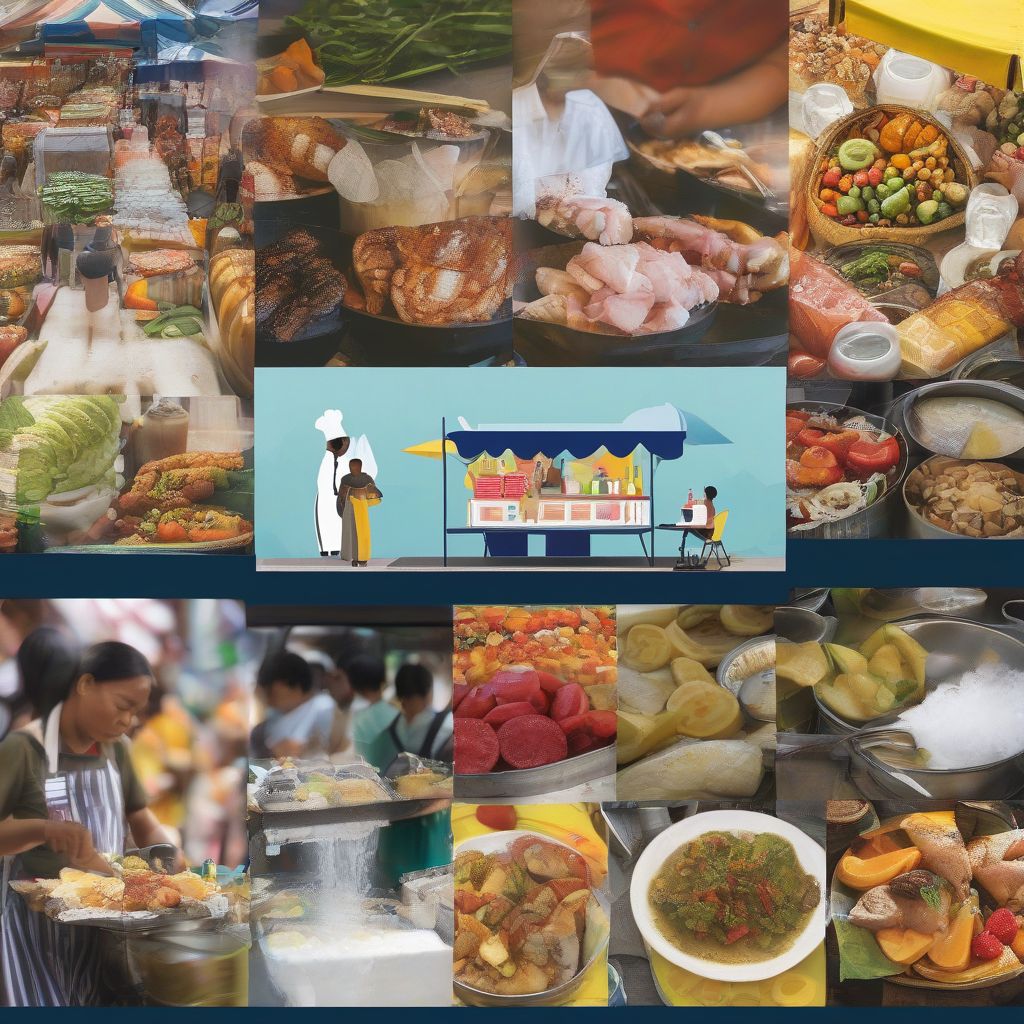Imagine biting into a delicious exotic fruit in a bustling marketplace, only to spend the next few days battling a nasty stomach bug. A dream vacation can quickly turn into a nightmare if you’re not careful about food safety while traveling abroad. Ensuring safe eating habits is crucial not only for enjoying your trip but also for protecting your health. As a registered dietitian and meal prep coach with eight years of experience, I’m passionate about helping you maintain healthy eating habits, even on your adventures. Let’s explore how you can navigate the culinary landscape of a new country safely and confidently.
Why Food Safety Matters When You Travel
Traveling introduces you to new cultures, experiences, and of course, food! However, different countries have different food handling standards, which can increase your risk of foodborne illnesses. These illnesses, often called “traveler’s diarrhea,” can range from mild discomfort to severe dehydration and hospitalization. No one wants their trip memories to include a hospital visit!
Common Culprits of Foodborne Illness
Several factors contribute to foodborne illness while traveling:
- Bacteria: Harmful bacteria like E. coli, Salmonella, and Campylobacter can contaminate food and water.
- Viruses: Norovirus and rotavirus are notorious for causing gastrointestinal distress.
- Parasites: Giardia and Cryptosporidium can linger in contaminated water and food, causing prolonged illness.
Protecting Yourself: Key Strategies for Safe Eating
Navigating the culinary scene of a foreign country can feel like walking a tightrope, but with the right knowledge and precautions, you can savor new flavors without jeopardizing your health.
 Food Safety Tips for Travelers
Food Safety Tips for Travelers
Choosing Safe Foods and Drinks
- Cooked food is your friend: Stick to thoroughly cooked foods, especially meat, poultry, and seafood. Ensure it’s piping hot before you eat. A local saying I once heard perfectly captures this: “Boil it, cook it, peel it, or forget it!”
- Embrace fruits and vegetables cautiously: Wash fruits and vegetables thoroughly with purified water, or opt for those that you can peel yourself.
- Water wisdom: Drink only bottled or purified water, avoiding tap water, ice cubes, and fountain drinks. Consider carrying a reusable water bottle and filling it at designated safe water stations.
- Dairy dilemmas: Be wary of unpasteurized dairy products, as they can harbor harmful bacteria. Stick to pasteurized milk, yogurt, and cheese.
- Street food savvy: Street food can be a tempting and authentic culinary experience, but choose vendors with high turnover and visible hygienic practices. Look for busy stalls where food is cooked fresh to order.
Practicing Safe Food Handling
- Hand hygiene is paramount: Wash your hands thoroughly with soap and water, especially before eating, after using the restroom, and after handling money. If soap and water are unavailable, carry hand sanitizer with at least 60% alcohol.
- Separate raw and cooked foods: Avoid cross-contamination by keeping raw meat, poultry, and seafood separate from other foods. Use different cutting boards and utensils.
- Pack smart: Carry a small food thermometer to check the internal temperature of cooked foods. This is especially useful if you’re staying in accommodations with cooking facilities.
Regional Considerations: Adapting Your Strategy
Food safety practices can vary significantly across regions. While general guidelines are essential, adapting your approach based on the specific location you’re visiting is equally important. Consulting travel health advisories before your trip can provide valuable insights into region-specific food safety risks.
Example: Southeast Asia
Street food is a major part of the culinary landscape in Southeast Asia. Look for vendors using fresh ingredients and cooking food to order. Be cautious of raw seafood and shellfish.
Example: South America
Tap water is generally not safe to drink in many parts of South America. Stick to bottled water and avoid ice cubes. Pay attention to the hygiene practices of restaurants and food vendors.
Food Safety Resources for Travelers
Several resources can help you stay informed about food safety risks and best practices while traveling:
- Centers for Disease Control and Prevention (CDC): The CDC offers comprehensive travel health information, including destination-specific recommendations for food and water safety.
- World Health Organization (WHO): The WHO provides global health information and guidance, including resources on food safety and travel health.
- Local health authorities: Check the website of the local health authority in your destination country for specific food safety guidelines.
Conclusion: Enjoy Your Travels, Safely
Exploring new cuisines is a thrilling part of international travel. By following these food safety guidelines and staying informed about potential risks, you can confidently savor the flavors of your destination while protecting your health. Remember, a little precaution goes a long way in ensuring a memorable and healthy trip. Share your own food safety tips in the comments below, and happy travels!



